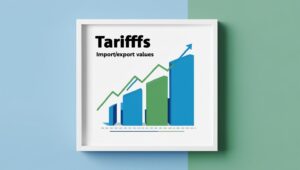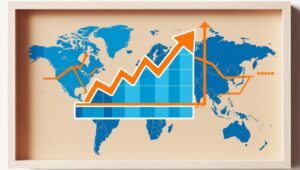
The Connection:
The interconnected nature of the North American economy means any significant policy shift in the United States can have profound effects north of the border. One area where this is particularly true is interest rates, and by extension, mortgage rates in Canada. Should the US impose tariffs on a wide range of goods, the potential ripple effects could impact Canadian monetary policy and, ultimately, the cost of borrowing for Canadians.
What Are Tariffs?
Tariffs, essentially taxes on imported goods, are designed to make foreign products more expensive, thereby encouraging consumers to buy domestically produced goods. While this might seem beneficial for the domestic economy in the short term, it can trigger a complex chain of events with international repercussions.
Tariffs and Inflation:
One of the most significant potential consequences of US tariffs is inflation. When imported goods become more expensive, businesses often pass those costs onto consumers. This can lead to a general increase in prices across the economy. If the tariffs are broad and substantial, this inflationary pressure can become significant.
The US Federal Reserve, responsible for managing inflation in the US, typically responds to rising inflation by raising interest rates. Higher interest rates make borrowing more expensive, which in turn can cool down the economy and curb inflation. This is where the direct link to Canadian mortgage rates begins to emerge.
The Bank of Canada and the Canadian Dollar:
The Bank of Canada, while independent, closely monitors the actions of the Federal Reserve. The two economies are deeply intertwined, and significant interest rate differentials between the two countries can create imbalances. For example, if the Federal Reserve raises rates aggressively while the Bank of Canada holds rates steady, it could lead to a significant outflow of capital from Canada as investors seek higher returns in the US. This capital flight can weaken the Canadian dollar.
A weaker Canadian dollar makes imports more expensive, further contributing to inflationary pressures in Canada. Furthermore, it can make it more difficult for Canadian businesses to compete with US companies, potentially impacting economic growth. In response to these pressures, the Bank of Canada might be forced to raise its own interest rates, even if the domestic economic conditions don’t necessarily warrant it.
Tariffs and Mortgage Rates in Canada:
This is where the impact on Canadian mortgage rates becomes clear. When the Bank of Canada raises its policy interest rate, commercial banks typically follow suit by increasing their prime lending rates. These prime rates directly influence the variable interest rates offered on mortgages. Therefore, if the Bank of Canada raises rates in response to US tariff-induced inflation, Canadians with variable-rate mortgages will likely see their monthly payments increase (again!). And to think we were out of the weeds….
Furthermore, even fixed mortgage rates can be affected. Fixed mortgage rates are influenced by the bond market, which in turn is sensitive to expectations about future inflation and interest rates. If the US imposes tariffs and inflation rises, bond yields in both the US and Canada are likely to climb. This increase in bond yields translates to higher fixed mortgage rates.
It’s important to note that the impact of US tariffs on Canadian mortgage rates is not a certainty. The magnitude of the effect will depend on several factors, including the size and scope of the tariffs, the overall state of the US and Canadian economies, and the specific responses of the Federal Reserve and the Bank of Canada.
Conclusion:
However, the potential for US tariffs to trigger inflation, leading to higher interest rates and, consequently, higher mortgage rates in Canada, is a real concern. Canadians considering taking out a mortgage, or those with existing variable rate mortgages, should be aware of this potential risk and factor it into their financial planning. It underscores the interconnectedness of global economies and how policy decisions in one country can have significant repercussions across borders. Monitoring developments in US trade policy and the responses of central banks will be crucial for understanding the future direction of Canadian mortgage rates.
Call us today to discuss your mortgage strategy in 2025 and onward.
Also, check out another important blog about mortgage rates forecasts for 2025.
***This blog post is for informational purposes only and should not be considered financial advice.***



